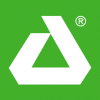Remember this hilarious and sweet video? David After Dentist.
A father who was videotaping his son after a dental procedure posted this video. The short video went viral in just 3 days, with over 119 million views to date. The enormous response to a child’s actions after being sedated is not surprising. Children (and adults) often find themselves experiencing an out of body sensation after sedation.
During many pediatric dental procedures, children (and parents) are offered a calming option for an anxious child. Nitrous Oxide is different from David’s sedation as it is considered a “conscious sedation method.” David was likely completely sedated, as it was a more intense procedure than a basic cavity fill.
The name of this conscious sedation gas, Nitrous Oxide, sounds more intimidating than it really is. Nitrous Oxide is actually very safe for use in pediatric dentistry. Laughing gas (as Nitrous Oxide is commonly called) is administered using a mask. The mask is placed over the face and inhaled until the body feels relaxed and sleepy.
Laughing gas is used in pediatric dentistry when a child feels overly anxious about a procedure, when the child has a very sensitive gag reflex, or to reduce the pain associated with a complex procedure. Many parents feel anxiety about this type of sedation but it is safe enough that pregnant women could also be candidates.
Listed below are 4 types of patients who should AVOID Nitrous Oxide:
[bulletlist]
- Patients with phobias or disabilities that prevent them from breathing through a mask
- Patients who have some psychiatric conditions, including schizophrenia
- Patients who are sensitive to nitrous oxide
- Patients who suffer from emphysema or another lung condition
[/bulletlist]
All in all, conscious sedation is a safe method of relaxing your child in the dentist’s office.
Do you have a funny “David After Dentist”-like story? Tell us about it in the comments!

